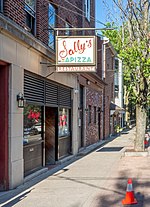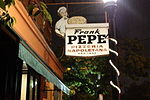New Haven Galleria
The New Haven Galleria at Long Wharf was a shopping mall proposed for construction in New Haven, Connecticut by mayoral candidate Wally Grigo in 1993.Although Grigo did not win the election, his idea was embraced in a March 1996 announcement by Mayor John DeStefano, Jr. for a $500 million project that would have been completed by 2001. In September 1997, DeStefano spoke of the Galleria as a "high-end mall that will not just make the city proud, but will serve the entire region with distinction."Although "developers from around the world competed to build the mall", the mayor insisted that the winning developer use a local construction family, the Fuscos, who were "major political fund-raisers for the mayor". The contract was eventually awarded to New England Development of Newton.
Excerpt from the Wikipedia article New Haven Galleria (License: CC BY-SA 3.0, Authors).New Haven Galleria
Sargent Drive, New Haven
Geographical coordinates (GPS) Address Website Nearby Places Show on map
Geographical coordinates (GPS)
| Latitude | Longitude |
|---|---|
| N 41.296 ° | E -72.92 ° |
Address
IKEA
Sargent Drive 450
06511 New Haven
Connecticut, United States
Open on Google Maps








